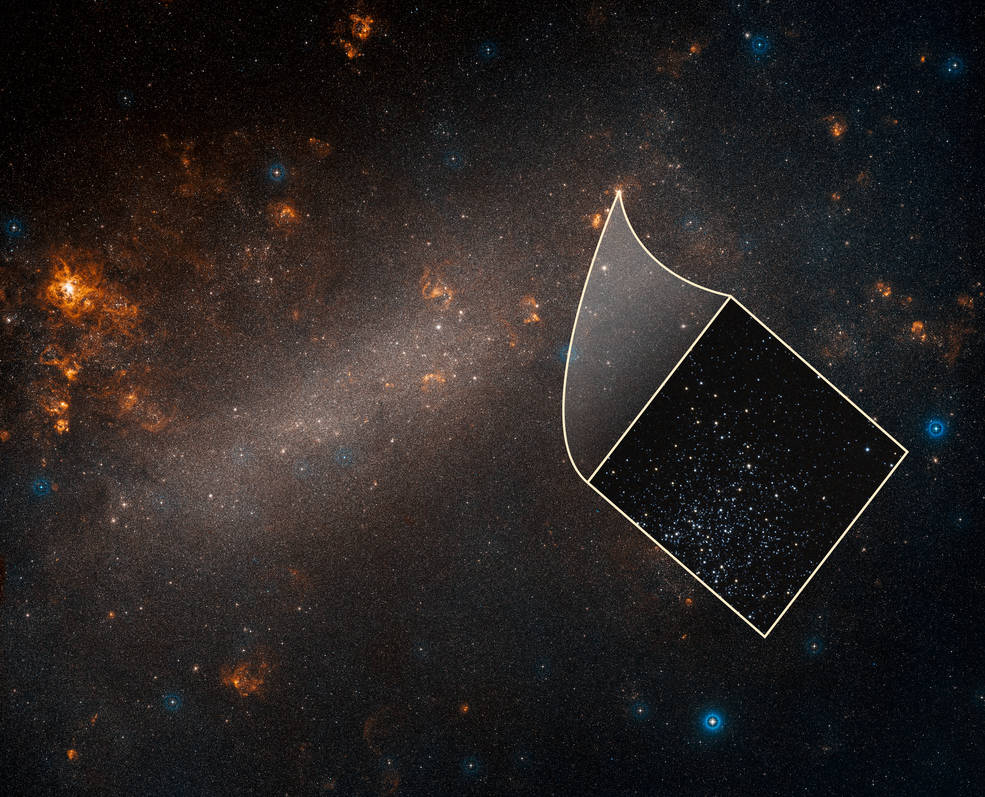
Los Angeles: The universe is expanding nine percent faster than expected, according to recent study conducted by researchers using NASA's Hubble Space Telescope.
Hubble measurements suggest a faster expansion rate based on how the universe appeared more than 13 billion years ago. These measurements of the early universe come from the European Space Agency's Planck satellite.
The Hubble measurements bolster the idea that new physics may be needed to explain the mismatch.
"The Hubble tension between the early and late universe may be the most exciting development in cosmology in decades," said lead researcher and Nobel laureate Adam Riess of the Space Telescope Science Institute (STScI) and Johns Hopkins University, in Baltimore, Maryland. "This mismatch has been growing and has now reached a point that is really impossible to dismiss as a fluke. This disparity could not plausibly occur just by chance."
Scientists use a "cosmic distance ladder" to determine how far away things are in the universe. This method depends on making accurate measurements of distances to nearby galaxies and then moving to galaxies farther and farther away, using their stars as milepost markers.
Astronomers use those values, along with other measurements of the galaxies' light that reddens as it passes through a stretching universe, to calculate how fast the cosmos expands with time, a value known as the Hubble constant. Riess and his SH0ES (Supernovae H0 for the Equation of State) team have been on a quest since 2005 to refine those distance measurements with Hubble and fine-tune the Hubble constant.
In this new study, astronomers used Hubble to observe 70 pulsating stars called Cepheid variables in the Large Magellanic Cloud. The observations helped the astronomers "rebuild" the distance ladder by improving the comparison between those Cepheids and their more distant cousins in the galactic hosts of supernovas. Riess's team reduced the uncertainty in their Hubble constant value to 1.9% from an earlier estimate of 2.2%.
As the team's measurements have become more precise, their calculation of the Hubble constant has remained at odds with the expected value derived from observations of the early universe's expansion. Those measurements were made by Planck, which maps the cosmic microwave background, a relic afterglow from 380,000 years after the big bang.
The measurements have been thoroughly vetted, so astronomers cannot currently dismiss the gap between the two results as due to an error in any single measurement or method. Both values have been tested multiple ways.
"This is not just two experiments disagreeing," Riess explained. "We are measuring something fundamentally different. One is a measurement of how fast the universe is expanding today, as we see it. The other is a prediction based on the physics of the early universe and on measurements of how fast it ought to be expanding. If these values don't agree, there becomes a very strong likelihood that we're missing something in the cosmological model that connects the two eras."
Astronomers have been using Cepheid variables as cosmic yardsticks to gauge nearby intergalactic distances for more than a century. But trying to harvest a bunch of these stars was so time-consuming as to be nearly unachievable. Therefore, the team employed a new method called DASH (Drift And Shift), using Hubble as a "point-and-shoot" camera to snap quick images of the extremely bright pulsating stars, which eliminates the time-consuming need for precise pointing.
"When Hubble uses precise pointing by locking onto guide stars, it can only observe one Cepheid per each 90-minute Hubble orbit around Earth. So, it would be very costly for the telescope to observe each Cepheid," explained team member Stefano Casertano, also of STScI and Johns Hopkins.
"Instead, we searched for groups of Cepheids close enough to each other that we could move between them without recalibrating the telescope pointing. These Cepheids are so bright, we only need to observe them for two seconds. This technique is allowing us to observe a dozen Cepheids for the duration of one orbit. So, we stay on gyroscope control and keep 'DASHing' around very fast."
The Hubble astronomers then combined their result with another set of observations, made by the Araucaria Project, a collaboration between astronomers from institutions in Chile, the US, and Europe. This group made distance measurements to the Large Magellanic Cloud by observing the dimming of light as one star passes in front of its partner in eclipsing binary-star systems.
The new estimate of the Hubble constant is 74 kilometres (46 miles) per second per megaparsec. This means that for every 3.3 million light-years farther away a galaxy is from us, it appears to be moving 74 kilometres (46 miles) per second faster, as a result of the expansion of the universe. The number indicates that the universe is expanding at a 9% faster rate than the prediction of 67 kilometres (41.6 miles) per second per megaparsec, which comes from Planck's observations of the early universe, coupled with our present understanding of the universe.